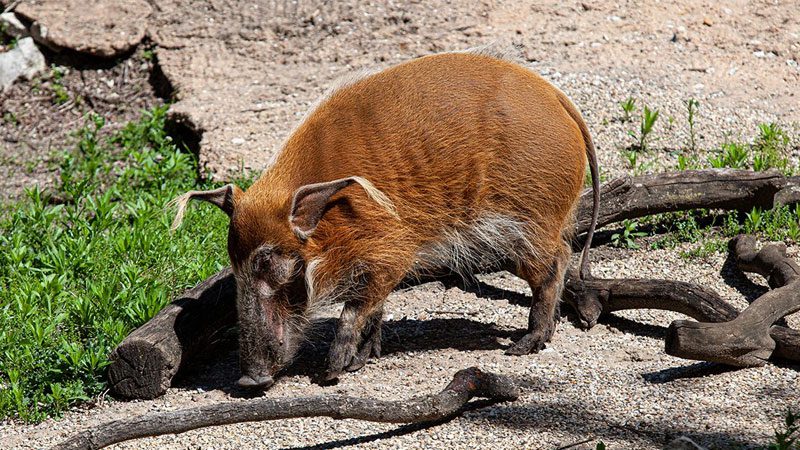Welcome to Lincoln Park Zoo’s new web app! Share your feedback

Red River Hog
Regenstein African Journey
Did You Know?
- Red river hogs have been observed following chimpanzees in search of dropped food. They will also eat undigested seeds in elephant dung.
- These are territorial animals. They outline their territory using tusks to scrape tree trunks or scent-mark with their feet, neck, and glands near their eyes.
- Red river hogs are an adaptable species and have not been as negatively affected by human encroachment as others. They have even been known to feed on local crops.
Don’t See the Animals?
Why aren’t animals visible at all times? To promote positive animal welfare, we provide animals with choices. They can choose to spend time in areas that are out of public view.

Take an Animal Home with You
Overview
Scientific Name: Potamochoerus porcus
Class: Mammals
Diet: Roots, fruits, seeds, crops, grasses, nuts, insects, bird eggs, snails, reptiles, carrion
Range: Western and central Africa
Endangered Status: Least Concern
More Information
Red river hogs are the most colorful pig family members, with red coats, white stripes, and brown or black coloration. They are usually 40–50 inches long and can weigh on average up to 285 pounds. Like all wild pigs, they have canine teeth that extend into tusks. Males also have elongated snouts with two warts that act as extra protection during dominance fights with other males.
These pigs are generally social animals. They are active at dusk and at night, spending their days burrowed in vegetation. Breeding takes place generally between September in April, peaking during the wet winter season. Females build grass nests where they give birth to three to six infants after about 130 days of gestation. Newborns weigh just 27 ounces, and both parents care for and protect them. Juveniles become adults at 3 years old.
